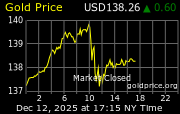Optimism over the Eurozone plan reducing gold’s safe-haven appeal
 After a bumpy start yesterday, owing to optimism over the Eurozone plan reducing gold’s safe-haven appeal, the metal managed to make some significant headway later on. Growing dollar weakness, together with some scepticism regarding the proposed Eurozone plan, most likely increased the appeal of gold as an alternative asset.
After a bumpy start yesterday, owing to optimism over the Eurozone plan reducing gold’s safe-haven appeal, the metal managed to make some significant headway later on. Growing dollar weakness, together with some scepticism regarding the proposed Eurozone plan, most likely increased the appeal of gold as an alternative asset.Today, despite a relatively weak dollar, we’ve seen some weakness emerge in gold. After yesterday’s rally the most likely culprit is profit-taking. In Asian markets overnight we saw buying largely absent, giving sellers the upper hand. This trend looks set to continue into today. However, amid growing scepticism over the Eurozone debt plan and the concomitant uncertainty of the region’s economic prospects, we feel that downside will be limited. Consequently, we would advocate buying dips on gold and silver.
PGM are tracking the broader precious metals complex, having largely shrugged off the disappointing Japanese vehicle production figures. Vehicle production in Japan fell 4.5% y/y in September after the previous month’s 1.8% y/y expansion. In terms of data today, the afternoon’s US personal spending/income and consumer confidence figures are the most noteworthy.
As usual, market participants will be looking for indications on the health of the US economy and the possibility of recession. Gold support is at $1,712 and $1,688. Resistance is $1,757 and $1,776.

































